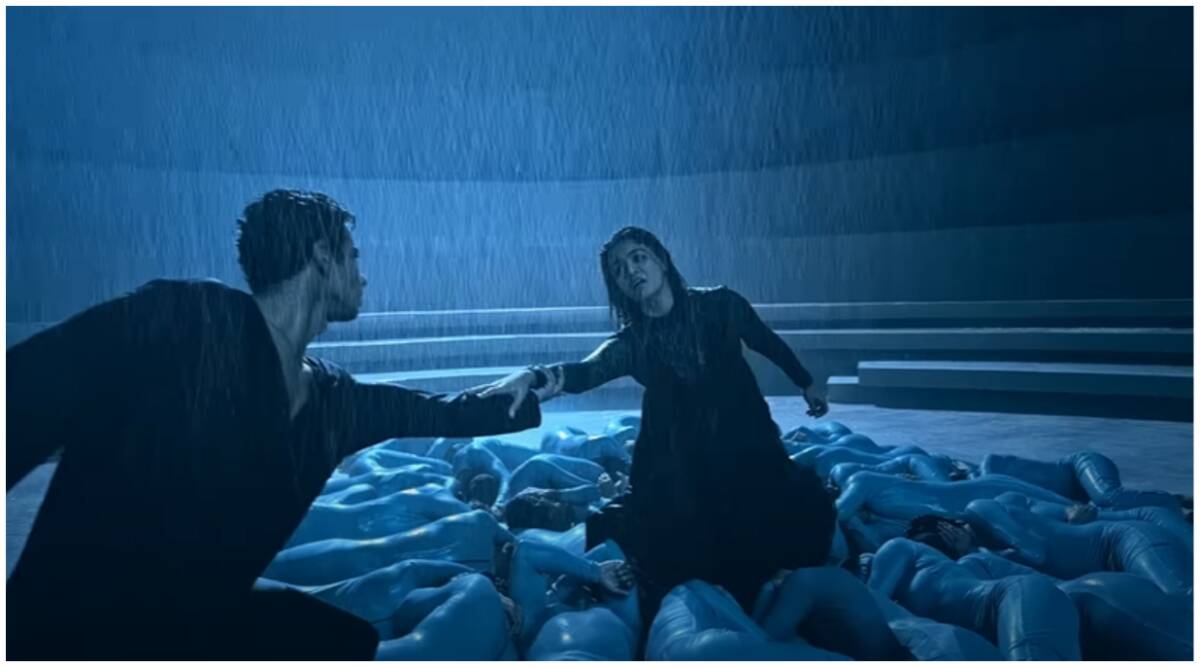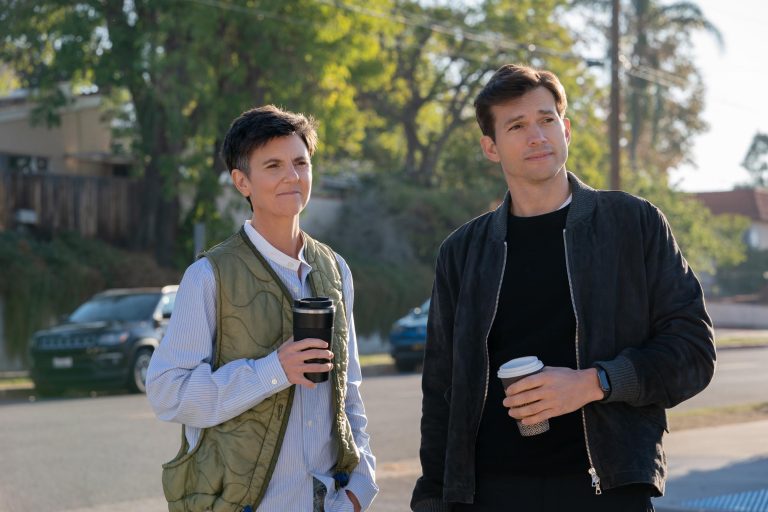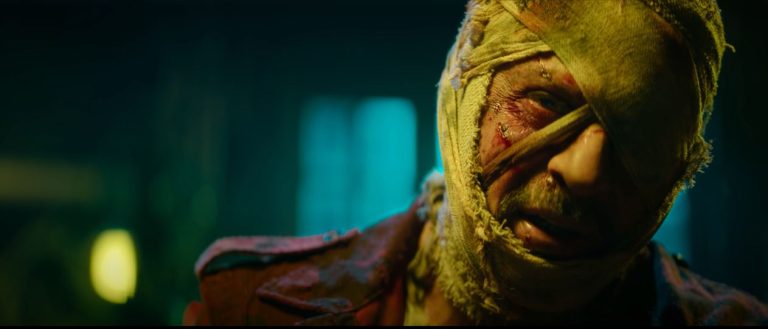The history of Bollywood and musicals is old as time. Apart from Sanjay Leela Bhansali, very few auteurs of Hindi language cinema have attempted to do both the music and direction for a film that also aligns with the western idea of musicals. Enter Vishal Bhardwaj with his Fursat. It is a 30-minute short film with a musical format recently released on Youtube and Hotstar. Fursat features actors like Ishaan and Wamiqa Gabbi. This is an audacious attempt to marry Bollywood masala storytelling with western musical sensibilities. What makes this project even more intriguing is that it is commissioned by Apple, and Bhardwaj’s Director of Photography Swapnil Sonawane has shot the grand scale entirely on iPhone 14 Pro.
Last year’s “Mumbai Dragon” from the Modern Love Mumbai anthology made a case for Bhardwaj as a deft storyteller in the short film format. His simple storytelling, coupled with a strong universal message, propels “Fursat” as well. The scenarios and dialogues are weird and humorous- reminding us of his earlier movies like Kaminey and Matru ki Bijlee ka Mandola. The story follows an archaeologist, Nishant, who finds Doordarshak, an ancient relic, and begins to see the future. With several projections like a burning train, a dangerous gangster, and a threat to his childhood sweetheart Diya’s life, the story captures how Nishant tackles the newly acquired capability at hand in his ‘quest that pits him against time.
Diya is a doctor at a government hospital somewhere in Rajasthan. Nishant, or Nishu, is a scientist obsessed with knowing the future. He discovers a relic which leads him to develop a time travel tool, one that tells the future accurately. Nishant is so engrossed in his ‘doordarshak’ that he forgets to appreciate the present. So much so that he misses a significant life event, which leads Diya to leave him. This creates the film’s central conflict that is resolved soon for a happily ever after ending.
“Upon Fursat’s release, Vishal Bhardwaj said, “A traditional film camera comes with ten people, three attendants, and ten boxes of lenses… you can’t move around. You can’t be quick. iPhone liberated me in that sense.”
Fursat delivers stunning cinematography from Sonawane that heavily leans on reds, whites, neons, and flaming oranges, with many natural elements like snowfalls and falling leaves interrupting the screen. The Broadway musical style visualization shifts to reggaeton choreography reminiscent of the MUBI original “Ema” to create a rejigging of the notion of a modern coming-of-age story that blends in debauchery and dance. To the untrained eye, the over-saturation of songs that are interspersed through its narrative without refined editing can come across as jarring. Nevertheless, the inclusion is clearly a market decision to show the feasibility of the iPhone as a cinematic tool for India.
Like all Vishal Bhardwaj films, the message is universal and simple: we should live in the present without worrying too much about what the future holds for us. The sci-fi elements are just secondary to the main romantic plot. Both Wamiqa Gabbi and Ishaan Khattar have delivered convincing performances, and they shift gracefully with the different genres. Bharadwaj uses the typical societal and cinematic motifs familiar to the Indian audiences as we see a grand wedding dance in Rajasthan and some gyan about Indian astronomy. However, the emotions remain quite opaque, probably due to so many things going on-screen on such a limited window. Still, the short is very enjoyable.
The iPhone films like Steven Soderbergh’s “Unsane” (partly shot on the phone) and the Oscar-winning documentary “Searching for Superman” (partly shot on the phone) are standout examples of technology cutting costs and efforts to make a film. With “Fursat,” this evolution is a lot more effective. Earlier, it was believed that the intimacy of filming on an iPhone, compared to a large camera, made it an adept and essential tool to show a canvas that fits the natural field of view. Many directors felt it helped the focus on telling an intimate story without getting too caught up in tons of typical technical and production headaches.
Bhardwaj takes a different route. He is not here to tell an intimate story that requires fewer locations and technical challenges. He doesn’t compromise with the scale and vision required for a musical film to work. Instead, he challenges and stretches the limits of an iPhone while filming high-speed track shots or grand lighting visuals- and mostly, it looks good.
Upon Fursat’s release, Vishal Bhardwaj said, “A traditional film camera comes with ten people, three attendants, and ten boxes of lenses… you can’t move around. You can’t be quick. iPhone liberated me in that sense. Action mode was the biggest surprise for me. In Fursat, we’ve covered a lot of things in Action mode. The visual is so jarring and destabilized if you see the raw footage. On Action mode, it’s so smooth. You have to see it to believe it.” iPhone 14 Pro’s Action mode has been brought into action to capture smooth and stable videos despite a lot of motion and shakes. This is especially useful in outdoor scenes.
The Cinematic mode records videos in 4K, creates a depth-of-field effect and smartly changes focus for a cinematic feel. Bhardwaj capitalizes on the lightweight maneuverability of the iPhone and uses its strengths to create an exhilarating and visceral cinematic mood. Bhardwaj’s music and Gulzar’s lyricism is an ever-dependable combination to bank on, and the versatility of the tracks doesn’t disappoint. Bhardwaj’s new favorite collaborator Kiran+Nivi gives “Kal Kahin” a voice texture similar to the grand operas, and it is easily an earworm.
Apple has been hell-bent on spreading the idea that all it takes is a passion for cinema and an iPhone. When Sean Baker’s breakout indie “Tangerine” arrived in 2015, its ambitious production caught a lot of attention from the film community due to the originality of its production — it was shot exclusively on a trio of iPhone 5s. The movie was not the first to use the smartphone as its primary camera, but it was the most recognized in a burgeoning field of filmmakers using phones as their primary means of production. The trend hasn’t slowed down. Later the release of Steven Soderbergh’s first foray into iPhone filmmaking, with the psychological thriller “Unsane,” joins a growing list of films — shorts, features, projects actually financed by Apple, and those made specifically because of the frugality of the equipment — shot on the smartphone.
Vishal Bhardwaj’s 30-minute short film, entirely on an iPhone 14 Pro, stands out for straightforward but compelling storytelling, despite hiccups and staccato snags in its execution. There were grand Broadway musical-style shots where an elaborate trope of singing and dancing was used to showcase the mental state of the characters- an attempt that is rare even in Bollywood since the failure of Jagga Jasoos. It also has the typical elements of an Indian musical, which have been executed with precision and a sharp aesthetic. “Fursat” should do good for Apple to establish them not only as a democratizing tool but also as a professional setup adept at shooting grandeur with ease.
Read More: ‘Normal People’ is Toxicity wrapped in Western Melancholy, cleverly disguised as an absorbing story
Watch Fursat Trailer
https://www.youtube.com/watch?v=2KmrtWCBvQ0







![Red Beard [1965] Review: End Of A Glorious Era](https://79468c92.delivery.rocketcdn.me/wp-content/uploads/2020/06/red-beard-cover-2-768x432.jpg)